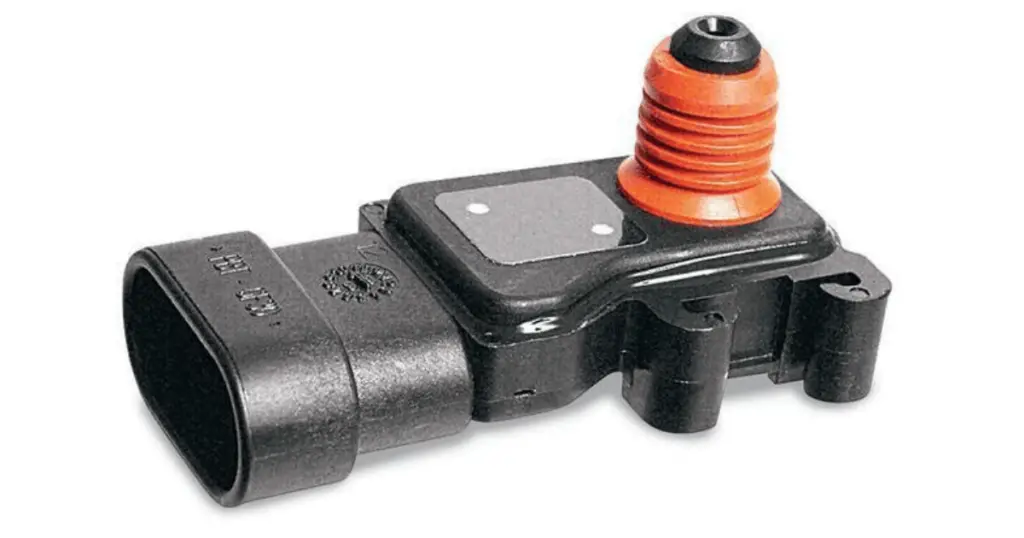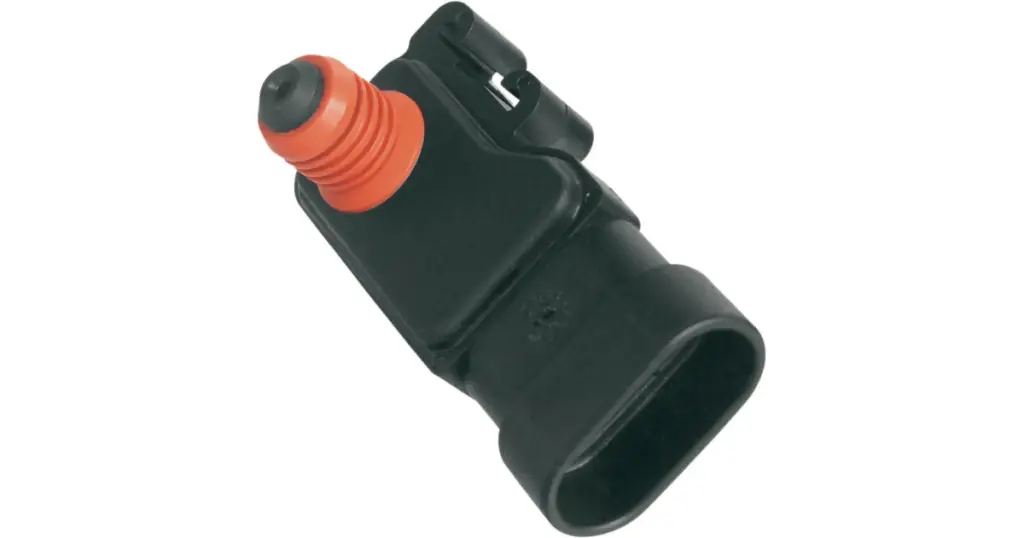IA Manifold Absolute Pressure (MAP) sensor is a key component in fuel-injected and later carbureted Harley motorcycles. It provides critical data to the Electronic Control Module (ECM), helping regulate engine performance. When this sensor fails or starts to malfunction, it can lead to various issues, affecting the motorcycle’s functionality. This article will delve into the most common Harley MAP sensor failure symptoms, its impact on a Harley’s performance, the diagnostic process, and steps for replacement. Ready? Let’s keep moving!
What is a MAP Sensor?

A MAP sensor is an essential part of modern engines, used to monitor manifold pressure or vacuum. It sends this information back to the ECM, which then determines the right amount of spark advance and fuel injection based on the MAP sensor’s data and other engine conditions. In Harley motorcycles, the MAP sensor plays a significant role in fuel management and ignition timing.
Note: MAP sensors are used on most modern engines, including Harley motorcycles, to monitor manifold pressure and provide essential data to the ECM.
What Are the Most Common Harley MAP Sensor Failure Symptoms?
A failing MAP sensor can exhibit several symptoms, ranging from subtle changes in engine performance to glaring issues that can significantly hamper your riding experience. Some of the most common indicators of MAP sensor failure include:
- Poor Fuel Economy: An incorrectly reading ECM may assume the engine is under high load, supplying too much fuel and overly advancing timing, leading to poor fuel economy.
- Loss of Power: If the ECM mistakenly reads high vacuum or under low load, it will reduce the fuel amount and retard spark timing. This can result in poor performance, especially when the MAP sensor Fails to notify the ECM of increased load.
- Rough Idle: A failing MAP sensor can cause insufficient fuel injection, resulting in a rough idle.
- Hesitation and Hard Starting: You might experience hesitation or stalling when starting from a stop or rolling on the throttle. Similarly, a rich or lean mixture caused by faulty MAP sensor data can make starting the engine difficult.
- Check Engine Light: A failing sensor or certain trouble codes related to different malfunctions can trigger the check engine light.
Related: Harley Check Engine Light Comes On After Start? Help Is Here
How Does a MAP Sensor Affect a Harley’s Performance?
The MAP sensor’s readings directly influence the ECM’s calculations, impacting the air-fuel ratio, fuel injector pulse, and spark advance. When the MAP sensor is functioning correctly, it ensures optimal combustion and fuel efficiency. However, a faulty MAP sensor can disrupt these calculations, leading to an imbalance in the air-fuel ratio. This imbalance can increase fuel consumption, decrease engine performance, and lead to higher emissions.

Can I Ride My Harley with a Faulty MAP Sensor?
While it’s technically possible to ride your Harley with a faulty MAP sensor, it’s not recommended. The incorrect air-fuel mix can cause the engine to run erratically, with possible backfiring and stalling. You may also experience difficulty maintaining a steady speed or keeping up with traffic when accelerating from a stop. In extreme cases, a faulty MAP sensor can lead to engine overheating, causing potential damage to the engine components.
How Do You Diagnose a MAP Sensor Issue on a Harley?
To diagnose a MAP sensor issue, you can start with a few basic tests:
- Check for Trouble Codes: Most modern motorcycles come equipped with an onboard diagnostic system. If your Harley’s ECM detects an issue with the MAP sensor, it will trigger a specific trouble code. You can access these codes using a scan tool or by checking your odometer, depending on your motorcycle’s model and year.
- Test the MAP Sensor: Another method to diagnose a MAP sensor issue is by testing its output using a digital multimeter or an oscilloscope. If the readings don’t match the standard values, it’s likely that the MAP sensor is faulty.
Related: Most Common Harley Davidson Diagnostic Codes Get Explained
What Causes MAP Sensor Failures in Harley Motorcycles?
Several factors can cause MAP sensor failures, including clogs, contamination, or physical damage. Sometimes, the engine’s heat can damage the MAP sensor’s electronics or cause vacuum line cracks. In other cases, corrosion or bent pins in the connector could cause signal problems. Similarly, chafing in the wiring between the ECM and the MAP sensor could lead to short circuits, while breaks could cause open circuits.
Is It Expensive to Replace a MAP Sensor on a Harley?
The cost to replace a MAP sensor varies depending on the model of your Harley and whether you choose to do it yourself or have it professionally replaced. The sensor itself is not overly expensive, but labor costs can add up if you decide to have a technician perform the replacement.
How to Replace a MAP Sensor in a Harley?
Replacing a MAP sensor is relatively straightforward. After removing the screws that hold the sensor clip, you can remove the MAP sensor from the intake manifold. When installing the new sensor, always use the new seal included and ensure it’s firmly seated to avoid vacuum leaks.
Can a Bad MAP Sensor Trigger the Check Engine Light on a Harley?
Yes, a bad MAP sensor can trigger the check engine light on your Harley. If the sensor fails or certain trouble codes related to different malfunctions are recorded, the check engine light will appear. In such cases, diagnosing and addressing the issue promptly is essential to prevent further damage to the engine.
Conclusion
A faulty MAP sensor can significantly impact your Harley’s performance. Recognizing the symptoms of MAP sensor failure and understanding how to diagnose and address them can help you maintain your motorcycle’s efficiency and ensure a smooth ride. Whether you choose to replace the sensor yourself or have a professional do it, promptly addressing a failing MAP sensor is crucial to prevent more serious engine issues.
Remember, a well-maintained MAP sensor is key to an optimally performing Harley!
Read More of My Latest & Greatest:
- How to Inspect Your Harley After Winter Storage Before Taking It on the Road
- Winter Care Tips for Harley-Davidson Custom Parts and Accessories
- How to Prevent Your Harley From Freezing While in Storage
- Why You Should Consider Upgrading Your Harley’s Winter Gear
- The Best Motorcycle Wax to Protect Your Harley in Winter
- What to Know Before Riding Your Harley in Snowy Conditions
- How to Avoid Flat Spots on Your Harley’s Tires Over Winter
- Best Practices for Winter Riding With Your Harley-Davidson
- How to Keep Your Harley’s Clutch and Shifting Smooth in Winter
- How to Care for Harley’s Leather Gear During Winter Months